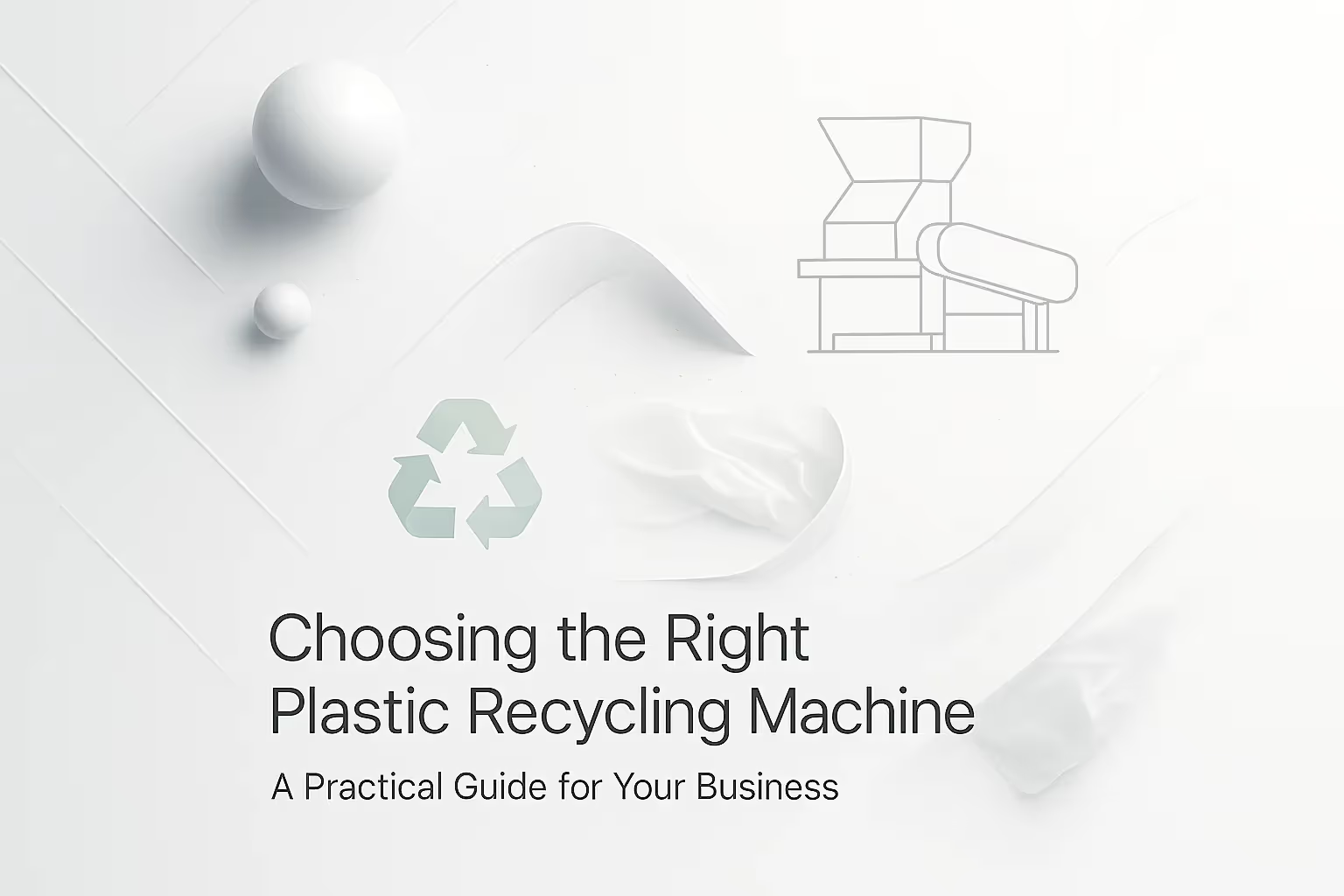Choosing the Right Plastic Recycling Machine: A Practical Guide for Your Business
Investing in a plastic recycling machine is a significant business decision. The right equipment can turn waste streams into revenue, improve operational efficiency, and support your sustainability goals. The wrong choice can lead to costly downtime, poor output quality, and operational headaches. This guide provides a straightforward framework to help you select the best machine for your specific needs.
Start with Your Material: The Foundation of Your Decision
The first and most critical factor is the type of plastic you plan to process. Plastic is not a single material; its form and composition dictate the machinery required.
- Soft Plastics (LDPE, LLDPE): Materials like plastic films, bags, and packaging wrap are notoriously difficult to process. They can wrap around rotating shafts, causing jams and equipment failure. A single-shaft shredder with a specialized rotor and screen is designed to prevent this, consistently cutting the material into manageable flakes.
- Hard, Rigid Plastics (HDPE, PVC, PP): Items such as pipes, crates, automotive bumpers, and old containers require high torque to break down. A dual-shaft shredder is often the best tool here. Its interlocking blades grab and shear the material with force, making it ideal for bulky or dense items.
- Brittle Plastics (PET, PS): PET bottles and polystyrene containers shatter easily. A high-speed plastic granulator is perfect for this application. It uses sharp, angled knives to quickly cut the material into uniform, small regrind, which is ideal for re-manufacturing.
Understanding your primary feedstock is non-negotiable. Mismatching the machine to the material is the most common and expensive mistake businesses make.
Match Capacity to Your Business Operations
Throughput, measured in pounds or tons per hour, determines how much material your machine can handle.
- Assess Your Current Volume: Calculate the amount of plastic waste you generate or collect daily. Choose a machine that can comfortably handle this volume without running at 100% capacity all day, which leads to premature wear.
- Plan for Growth: A machine is a long-term asset. Consider your business’s growth trajectory over the next three to five years. Investing in a machine with slightly more capacity than you need today can prevent the need for a costly upgrade down the line. A machine that is too small will create a bottleneck in your entire operation.
Define Your Desired Output Quality
What is the end goal for your recycled plastic? The answer directly influences your equipment choice. The value of your output is tied directly to its quality and uniformity.
- Shredded Flakes for Volume Reduction: If your goal is simply to reduce the volume of plastic for cheaper transport or disposal, a basic shredder will produce rough, inconsistently sized pieces. This is the lowest-value output.
- Granulated Regrind for Remanufacturing: Manufacturers buying recycled plastic often require clean, uniform regrind (typically under 10mm). A granulator produces this high-quality feedstock. Often, a two-stage process is used: a shredder for initial size reduction, followed by a granulator for precise final sizing.
- Pellets for Direct Production: The highest-value output is uniform pellets. An extruder and pelletizer system takes shredded and cleaned plastic, melts it, filters out impurities, and forms it into consistent pellets. These pellets are ready to be fed directly into injection molders or other production machinery, commanding the highest price on the market.
Total Cost of Ownership: Look Beyond the Price Tag
A common mistake is focusing solely on the initial purchase price. The true cost of a machine includes its operational expenses over its entire lifespan.
- Energy Consumption: The motor is the heart of your machine. Look for models with high-efficiency motors (IE3 or IE4 ratings). A machine that uses 15% less electricity can save you thousands of dollars in utility costs each year.
- Blade and Component Durability: The cutting blades do the heavy lifting. Inquire about the blade material. High-quality machines use durable tool steels like D2 or specially hardened alloys that hold an edge longer and resist chipping. This means fewer replacements, less downtime, and lower maintenance costs.
- Maintenance and Accessibility: How easy is it to service the machine? Well-designed equipment provides simple access to the screen, blades, and motor for routine cleaning and maintenance. A machine that takes four hours to change blades instead of one will cost you significantly in lost production time.
Essential Systems for a Complete Recycling Line
A shredder or granulator is often just one part of a complete system. To produce high-quality, valuable output, you will likely need supporting equipment.
- Washing and Drying Systems: Contaminants like dirt, paper labels, glue, and food residue will ruin the quality of recycled plastic. A wash line is essential for cleaning the plastic flakes. It agitates the material in water to remove debris, and a subsequent drying system removes moisture, which is critical for the extrusion process.
- Automation and Safety: Modern systems incorporate automation to improve efficiency and protect workers. Features like automated infeed conveyors, overload protection that automatically reverses the shafts to clear a jam, and safety interlocks that shut down the machine if access panels are opened are no longer luxuries—they are essential for a safe and productive workplace that complies with OSHA standards.
By focusing on these practical factors—material type, capacity, output goals, and total cost of ownership—you can select a plastic recycling machine that functions as a profitable asset for your business, not a liability.
